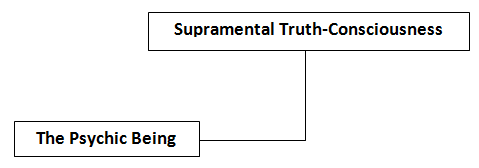|
One could argue that the ordinary mind can also receive intuitions and display premonitions; can intellectualize and philosophize. But this is not sufficient. “The ordinary mind is at the highest the free intelligence, receiving perhaps intuitions and intimations from above which it intellectualizes. It is on the surface and sees things from outside except in so far as it is helped by intuition and other powers to see a little deeper. When this ordinary mind opens within to inner mind and psychic and above to higher mind and higher consciousness generally, then it begins to be spiritualised and its highest ranges merge into the spiritual mind-consciousness of which the higher mind can be a beginning. This merging is part of the spiritual transformation.”(CWSA 28, pg.235).
“The spiritual mind is a mind which, in its fullness, is aware of the Self, reflecting the Divine, seeing and understanding the nature the Self and its relations with the manifestation, living in that or in contact with it , calm, wide and awake to higher knowledge, not perturbed by the play of the Forces. When it gets its full liberated movement, its central station is very usually felt above the head, though its influence can extend downward through all the being and outward through all the being and outward through space.”(CWSA 28 , pg.158).
Beyond the Spiritual Mind
Yet the spiritual mind is not the final consummation of all mental experiences. As Sri Aurobindo points out , “The ordinary Yoga does not go beyond the spiritual mind –people feel at the top of the head the joining with the Brahman, but they are not aware of a consciousness above the head”. (CWSA 29, pg.377).
Sri Aurobindo stresses the psychological truth that even the Mind, “at its highest stages far beyond our present mentality, acts yet in its nature by division; it takes the aspects of the Eternal and treats each aspect as if it were the whole truth of the Eternal Being and can find in each its own perfect fulfilment.”(The Life Divine, pg.242-243). This is how mankind has erected different and apparently contradictory metaphysical schools of Thought and Yoga that consider one or other experiential concept as “the sole abiding Truth of existence”(Ibid, pg.243):
“the Silence of the Divine” or “the divine Dynamis”;
“the immobile Brahman aloof from existence, without qualities” or “the active Brahman with qualities, Lord of existence”;
“Being” or “Becoming”, “The Divine Person” or “an impersonal pure Existence”. (Ibid)
Thus even a genuine and exalted spiritual experience tends to pursue one line exclusively while disregarding other lines though all paths lead to the same Divinity. “It can regard the Person as the sole Reality or the Impersonal as alone True; it can regard the Lover as only a means of expression of eternal Love or love as only the self-expression of the Lover; it can see beings as only personal powers of an impersonal Existence or impersonal existence as only a state of the one Being, the Infinite Person”. (Ibid)
Sri Aurobindo postulates that however high is the spiritual mind, there is a yet higher status of consciousness that is the “Supermind Truth-Consciousness” – the Supreme Creative Consciousness which holds the pre-programmed essence of all that manifests. Naturally it is a unitary and totipotent consciousness where all opposites “disappear and these partialities are relinquished in the rich totality of a supreme and integral realisation of eternal Being.” (Ibid)
Thus there are two movements to be initially considered. The first movement is the coming forward of the psychic being which , surpassing the desire-soul, integrates the being around it, Secondly, the being, integrated around the psychic or soul-principle ascends the hierarchies of consciousness to reach the Supramental Consciousness. This is the zone of Integral Cognition that can cognize all things at all planes of consciousness simultaneously.
The stage is then set for a third movement – the descent of the Supramental Consciousness which has the power to transform the being. The Supramental transformation then lifts the being “to the summit of the ascending endeavour”.(Ibid) In fact, the ascent to the highest Supramental consciousness must be accompanied by a descent of the latter into the being poised in the terrestrial consciousness, or else there can be no permanent transformation of the being,
Table:

Date of Update:
22-Jul-19
- By Dr. Soumitra Basu
|

